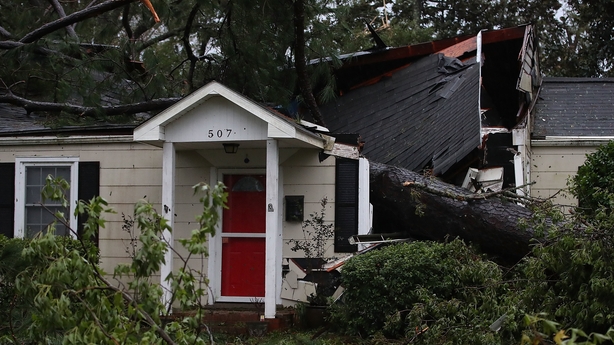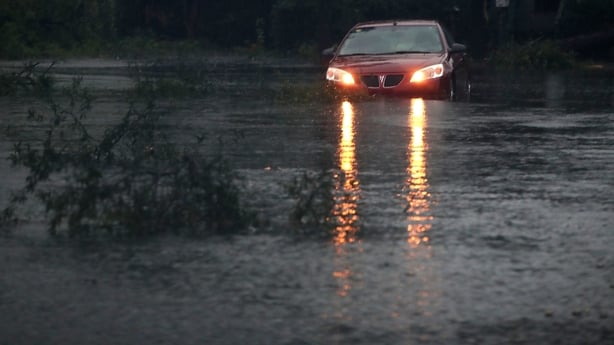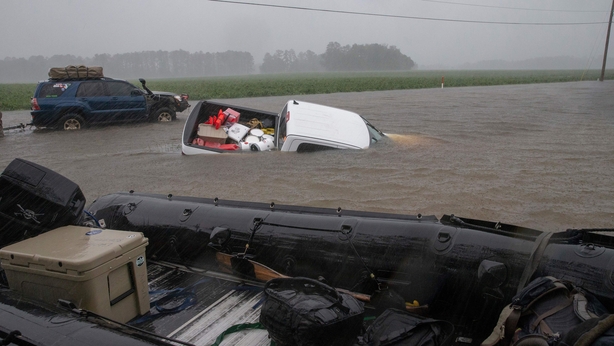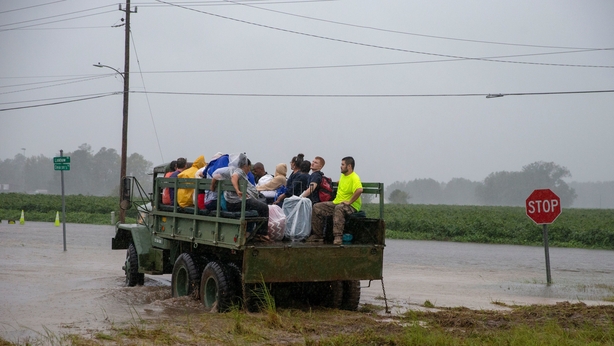Florence has drenched North Carolina with yet more rain and officials have warned residents that "the worst is yet to come" from a storm that has killed at least 14 people, as rivers inland were likely to flood.
Florence, which crashed into the state as a hurricane on Friday, had weakened to a tropical depression by this morning but was forecast to drop another 5-10 inches of rain in North Carolina, bringing rainfall totals in some inland areas to 15-20 inches and even more in some places, according to the National Hurricane Center.
The most rain so far from Florence was 33.9 inches in Swansboro, North Carolina, a new record for a single hurricane in the state.
The previous record was 24 inches, set by Hurricane Floyd, which killed 56 people in 1999, a meteorologist with private forecasting service DTN Marine Weather said.
In North Carolina, more than 900 people were rescued from rising flood waters and 15,000 remained in shelters, North Carolina Governor Roy Cooper told a news conference.


At least ten people have died so far in the storm in North Carolina, including a mother and child killed by a falling tree, state officials said.
Four people died in South Carolina, including a woman whose car hit a fallen tree.
In Fayetteville, a North Carolina city of about 210,000 people some 145km inland, authorities told thousands of residents near the Cape Fear River and Little River to get out of their homes by this afternoon because of the flood risk.
"If you are refusing to leave during this mandatory evacuation, you need to do things like notify your legal next of kin because the loss of life is very, very possible," Mayor Mitch Colvin said at a news conference.
"The worst is yet to come," he added.
In Leland, a low-lying city north of Wilmington, homes and local businesses were engulfed by water.
Gas stations were abandoned, with many pumps keeled over, and trees cluttered many roads, making them impassable.
The sound of generators could be heard throughout the city, a sound not expected to dim soon as crews work to restore power.
About 756,000 homes and businesses were without power in North and South Carolina and surrounding states, down from a peak of nearly one million.
Five people were arrested for breaking into a Dollar General Store, the police department in Wilmington said, which has imposed a nighttime curfew.


"This is still a catastrophic, life threatening storm," said Zack Taylor, a meteorologist with the National Weather Service's Weather Prediction Center.
"It has already dumped 20 to 30 inches of rain on parts of the Carolinas with more to come," he said. "And many of the rivers will see prolonged flooding, some not cresting for a few days."
North Carolina officials warned motorists not to drive on roads in a large area - south of the I-64 and east of theI-73/74 highways - as the entire southeast corner of the state had hazardous conditions.
Dams and bridges were in peril as rivers and creeks swelled.
The flooding could taint waterways with murky coal ash and toxic hog waste.
By this morning the storm's winds had dropped to about 55km/h, the NHC in Miami said.
The storm had picked up some pace and was moving at 16km/h.
Its centre was expected to move across the western Carolinas today and over the Ohio Valley and Northeast United States on Monday and Tuesday.
The White House said President Donald Trump approved making federal funding available in some affected counties.
Mr Trump, who plans to visit the region this week, tweeted his "deepest sympathies and warmth" to the families and friends of those who died.

